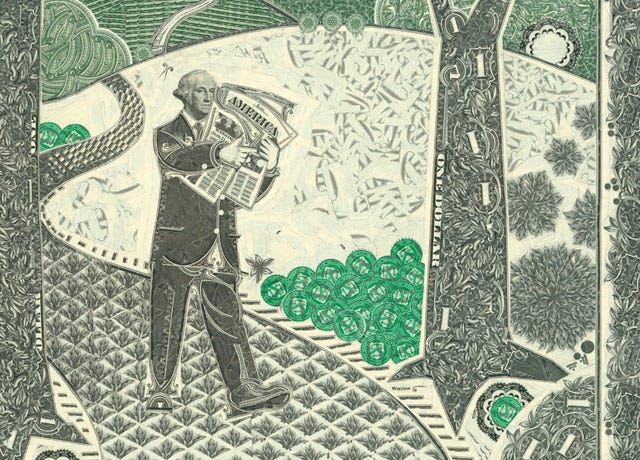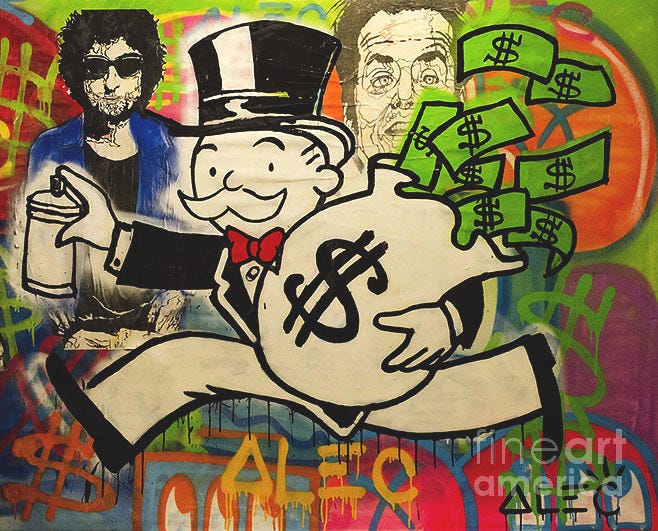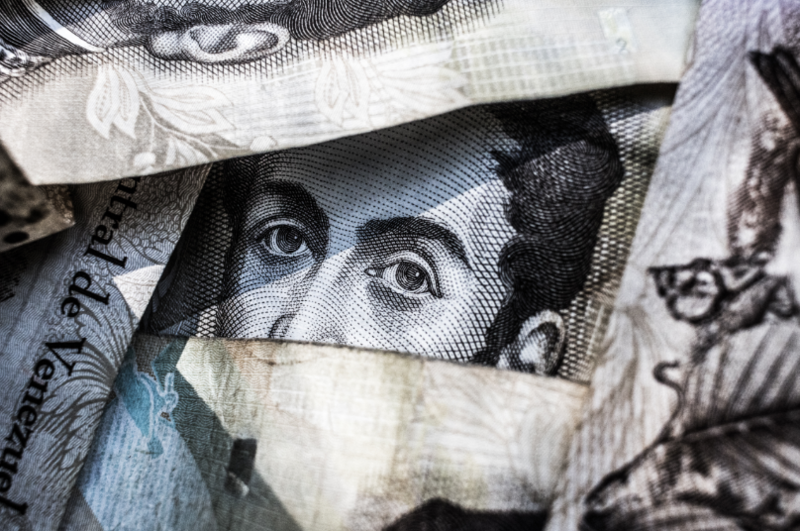I find most people are either a fan of art or hate it.
If you’re in the middle, you must be an artist yourself.
After all, there are endless styles, genres, and interpretations of art.
What you consider a masterpiece, I may consider garbage and vice versa.
But in terms of artwork in the investing world, it mostly evolves around overpriced paintings, landscapes, brush strokes, NFTs or a blank canvas you can hang up in your dinning room.
As a native New Yorker having lived within walking distance from various artistic venues at different points in my life from the MET to MOMA, New Museum to Neue Gallery, and my personal favorite the Whitney Museum, I’ve become immersed in the culture of arts and found a fascination for the lucrative, elite market. Especially since NYC is arguably one of the most creative, artistic, and dare I say, wild cities on the planet, I have a natural affinity for art. You can’t go wrong with art. There are no rules or bad art.
Plus it doesn’t hurt to have it in your home! When you are selling it, it brightens the space, lightens the mood, and is the best conversation starter if you never know what to ask past, “how are you” like I always do!
Instagram to dance are a form of art but to capitalize on it as a part of your portfolio, you need to get in on the gems.
But art is hellish expensive and most of the time, there’s no way to justify its price. As opposed to milk at the store, there are thousands of other options you can choose from besides whole cow milk, the only milk I approve of btw.
In this day in age where vegans and paleos collide, there’s oat, soy, almond, chocolate, wheat, you name it. Traditional cow milk has less expensive alternatives and substitutes but when it comes to art, there’s rarely room for negotiation to bid for a lower price since the buyer doesn’t determine what it’s worth.
Sometimes bidding for a lower price on a painting signifies you don’t value the piece and that could hurt your chances of owning it altogether.

Splat
Similarly to the craze behind NFTs, non-fungible tokens which in English means any digital asset/artwork/memorabilia/collectible/thing one purchases using crypto on the blockchain exchange (a trading center for all crypto transactions), art has been booming during the pandemic as people have paid more attention to their sad plain vanilla walls.
Although NFTs have become more appealing over the months as they became increasingly popular this past year with billionaires touting it on social media and crypto in general, $30m for a digital rock doesn’t sound logical to me…
So why is it that affluent, upper-class folks flock to overly priced collectibles and art?
Do the rich and famous just have too much money to spend and need something to fill their desktop wallpaper or their 3rd beach home with?
PS: No, they are smarter than that and stay rich for that reason.
The same reason why you collected Pokemon cards in MS, applies to random art a Sotheby’s buyer may not even enjoy but cannot help but buy.
-Scarcity = guaranteed to go up in value
-Precious
-One of a kind, non-replacebale or refundable
-Hidden internal value taht is decide dbyt eh creator or artist nto the buyer
-PHyscial asset that attains its value
-Prestige
-Appeal
-Pride
Most of us tend to have some sort of artwork in our homes. It’s probably the kind you get at Ikea or Best Buy for under $100. Nothing to be ashamed of!
You can actually get quality and beautiful art you want to look at and not hide to resell in 50 years at local less fancy stores.
My family are in the same boat as most art lovers. We would rather invest in alternatives such as farmland, real estate crowdfunding, VC or private equity than in a dusty confusing painting. Visiting a museum once in a while makes the art more enjoyable as opposed to seeing it everyday.
And the good news is that we may not be missing out on all that much.

Art’s Skeptical Allure
Now only 1% or so of working Americans can actually afford a one-of-a-kind historical luxury like a Monet or Picasso painting. Dishing out over a million dollars on something that we cannot physically use or snag value right away from is difficult to comprehend, even for the rich.
Between 1985–2018, the art market’s return has only been in line with that of fixed-income (bonds, bills, notes) according to a report from Citi based on data from Masterworks. Plus artwork is extremely volatile, subject to maintenance and preservation and is simply unpredictable! Although Picasso got lucky and 50 years later his pieces are now worth 250x more than what he attempted to sell it on the streets of France for, there’s no guarantee that will happen years later for today’s buyer.
Our tastes change and so do our price points. Contemporary art has returned on average by 7.5% compared to fixed income investment grade bonds averaging 8.1% according to CNBC. Plus, art prices are subject to interest rates! Who would have thought that “periods of falling and/or low real rates have coincided with rising art prices”!

Next time you are debating on heading down to an art auction, do your research first. And even if it’s a stunning painting that is irreplaceable, perception is not reality and may be deceiving you.
There’s no way to completely track an art’s performance because it doesn’t have a standardized index like the S&P 500 and there is no established tracking product.
After all you could also argue art is essentially invaluable since the “beauty is in the eye of the beholder”.

Rip Off
Isn’t it crazy how people are willing to pay top dollar for hideous artwork or something a 5 year old can do?
It’s beyond the art at that point.
It’s for the presentation and conversation starters instead.
But where do you draw the line on how much to spend on artwork?
How can you guarantee it will be useful and practical or will it never be until it’s sold?
Is it worth getting into debt for in the first place?
I don’t think it’s a horrible idea to take out a loan to buy artwork per se since Americans go into debt by taking out a mortgage to buy a home and even foolish traders buy on margin and take on excess leverage (thanks Robinhood) to trade meme stocks that offer little guarantee.
Even artwork has more stability but once again, I’m not promoting going into debt for anything. You must decide for yourself what you will get out of it.
Art on the other hand is physical. It retains its value until it can no longer be enjoyed through marginal utility.
Art has all the practical purposes and benefits as with real estate except for its true purpose which always throws me off.

The Point of Art
A few months ago I heard my neighbor was heading down to Sotheby’s to check out the auction house for NFTS. Randomly when we met in the elevator, he rambled for 30+ minutes telling me there’s no point in collecting sports cards and tremendous value in art since you can enjoy it and see a new perspective everyday.
I didn’t offer my point of view. I was just simply curious where he was headed with his binoculars and checkbook.
This is one out of many of my neighbors in my building who is constantly busy, on the phone, and always out the door by 5am and not home until 10pm.
Typically when I finish my workout I see him heading home with a crooked suit and tie all sweaty and exhausted after a long day at work.
I don’t know what he does or where he goes but since he takes a left out of our building I’m assuming downtown to Wall Street.
He often tells me about his fascination with landscapes and photography since he was a kid.
I felt bad he wasn’t chasing after his dream of painting and instead hired to chase after someone else’s. But all in all he says he is content in what he does and has a long-term exit plan, something I don’t think he should wait for if he’s this desperate to find happiness.
Although the buyers at Sothebys or Christie’s auction tend to be affluent as hedge fund clients with net worths above $1m earning $250k+ per year, I never suspected he would be into lavish art or part of this secluded group. He is a down to earth, frugal, minimalist single guy who just likes art nothing else.
Once I got a sneak peek into his apartment as he was having furniture delivered to the front door and his private elevator needed to be open for hours into his loft. I glanced walking by and noticed the walls were filled with masterpieces and vibrant colors. It was a museum like no other.
To him, art is everything and to most, they prefer spending more on furniture and appliances. I think his approach is unique and not silly.
Especially living alone, he has all the say on what he wants to fill his apartment with. And since you have to fill your unit with something, might as well fill it with investment pieces that happen to be scenic landscapes!
Now it’s impossible to say whether he painted them himself, if these are all from Christie’s or from the secondary market, but whatever the price may be and wherever they came from, they sure seem like durable investments that have paid off for him.

I believe a true investment is one that:
-Makes your life easier, more pleasant and satisfactory in some way
-Saves you time
-Allows you to decompress
-A great conversation starter (art best fits this)
-Enhances your passion + ends up returning more for you later on
-Something you enjoy interacting, looking or being with daily
-Irreplaceable
To enjoy your investments, don’t look at everything from a portfolio standpoint rather the investment you are providing in your life.
Is it paying dividends for you and expanding your world?
Fast forward to today, after colliding in the hallway the other day, he told me he took on re-selling art he purchased and the pieces he’s made. When he has time, which only includes weekday evenings from 10pm-4am and weekends, he paints and resells them as a side hustle.
I have to say when he told me that I got a bit emotional and proud for allowing himself to pursue his childhood dream and actually make money from it.
As a personal finance advocate and enthusiast, I believe there’s no better feeling than seeing someone use their outside interest as an investment in their lives.
It pays dividends for a lifetime when you do something you thoroughly enjoy. He was searching for some sort of meaning and was able to keep his office job as he now has something to look forward to on the side.
Life can quickly get cut short if you don’t have any mission or solely attempt to please your family rising up the corporate latter. With no internal purpose, humans are lost.
I believe being rich isn’t being able to afford everything you possibly can to impress people you don’t know. Rather it’s about providing yourself the lifestyle, flexibility, and get back time to do whatever you need to do to live life your way.
Time = money after all and if art provides you that sanctuary, it is one-of-a-kind treasure that fixed-income cannot deliver. Our time is finite. Might as well put our dollars and time towards making life more enjoyable.
Whether you are interested in buying, observing, enjoying or owning shares of artwork, there’s always an outlet somewhere. Masterworks, an online art marketplace (not sponsored nor affiliated in anyway just a recommendation) is a place I recommend if you don’t feel like dishing out $10 million on a splash of paint.
It might unlock a world for you, figuratively and literally, that you never knew about.

